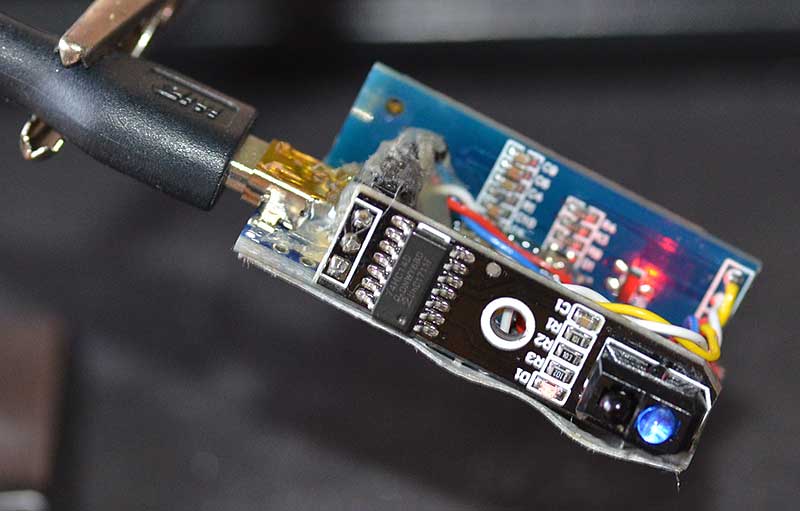
Shocking Signs That Show How to Tell If Your Tachometer Is Bad?
Share
If you're an automotive enthusiast or a tech professional, understanding the functionality of your vehicle's tachometer is crucial. The tachometer, which displays the engine's RPM (revolutions per minute), is an integral part of vehicle monitoring. Knowing how to tell if your tachometer is bad can save you time, hassle, and perhaps even prevent engine damage.
\nIn this article, we will discuss vital information that helps you assess the condition of your tachometer. We will explore various symptoms that indicate a faulty tachometer and guide you through the process of diagnosing and potentially fixing it.
\n
What Is a Tachometer?
\nA tachometer is a device that measures the rotational speed of an object, typically a shaft or disk. In automobiles, it monitors the engine's RPM. Relying on either mechanical or electronic systems, it indicates how hard the engine is working, allowing drivers to make informed decisions.
\nFor a more in-depth understanding, refer to this resource that explains what a tachometer is in detail.
\nCommon Symptoms of a Bad Tachometer
\nIdentifying whether your tachometer is malfunctioning is relatively straightforward if you know what to look for:
\n1. Inconsistent Readings
\nIf the tachometer needle fluctuates or jumps erratically, it may signal internal issues. A properly functioning tachometer should provide smooth and consistent readings in rhythm with the engine's performance.
\n2. No Response
\nWhen you notice that the tachometer does not respond at all, its a significant indicator of potential failure. This scenario could arise from faulty wiring, blown fuses, or a defective tachometer unit altogether.
\n3. Lagging Indicator
\nWhen the tachometer lags behind actual engine performance, it can be alarming. For example, when accelerating, the tachometer should rise almost instantaneously with the engine speed. Delays suggest problems with the sensor or display.
\n4. Unusual Sounds
\nIf you hear strange sounds, especially buzzing or clicking noises, this might indicate electrical issues affecting the tachometers performance. The noise might be coming from the instrument cluster itself.
\nDiagnosing a Faulty Tachometer
\nNow that you know the symptoms, it's time to dive deeper into how to tell if your tachometer is bad. Follow these steps for effective diagnosis:
\n1. Visual Inspection
\nBegin with a thorough visual examination of the tachometer and its connections. Look for signs of damage, corroded wires, or loose connections. If you notice anything abnormal, that could be your issue.
\n2. Check the Fuses
\nBlown fuses are often overlooked causes of a non-functional tachometer. Check your vehicles fuse box for any blown fuses and replace them appropriately.
\n3. Conduct a Multimeter Test
\nUsing a multimeter, you can measure the voltage at the tachometer's connections. Compare these values to the manufacturer's specifications. If the readings are off, your tachometer might be faulty.
\n4. Examine the Signal Generator
\nThe tachometer receives an electrical signal that correlates with the engine's RPM from the ignition system. Check the signal generator to ensure its functioning correctly by assessing its voltage and connectivity.
\nHow to Fix a Bad Tachometer
\nIf you've confirmed that your tachometer is faulty, here are some basic fixes that might resolve the issues:
\n1. Repair or Replace Wiring
\nDamaged or corroded wiring often plays a significant role in tachometer malfunctions. Repair or replace faulty wires to restore functionality.
\n2. Replace Blown Fuses
\nIf you find any blown fuses, replacing them can often solve your tachometer problems. Ensure that you replace the fuse with one of the correct amperage.
\n3. Recalibrate the Tachometer
\nIf the tachometer is miscalibrated, it can give inaccurate readings. Recalibrating the tachometer through the appropriate service manual can help improve accuracy.
\n4. Consider Professional Help
\nIf none of the above steps work, seeking professional assistance may be needed. Technicians can conduct comprehensive diagnostics to identify more complicated issues. Dont hesitate to reach out!
\nConclusion
\nUnderstanding how to tell if your tachometer is bad is crucial for maintaining your vehicles performance. Keep an eye out for suspicious symptoms that indicate malfunctions, and take prompt action as needed. Staying informed can save you from further complications in the future.
\n
FAQs
\n1. What are the common causes of tachometer failure?
\nCommon causes include wiring issues, circuit problems, and sensor failure.
\n2. Can a faulty tachometer damage my engine?
\nWhile a malfunctioning tachometer will not directly damage the engine, it can lead to poor driving decisions if the driver relies on inaccurate RPM data.
\n3. How much does it cost to fix a tachometer?
\nThe cost of fixing a tachometer can greatly vary depending on the issue, ranging from minor repairs to complete unit replacements.
\nLearn more about fixing tachometers.
\n